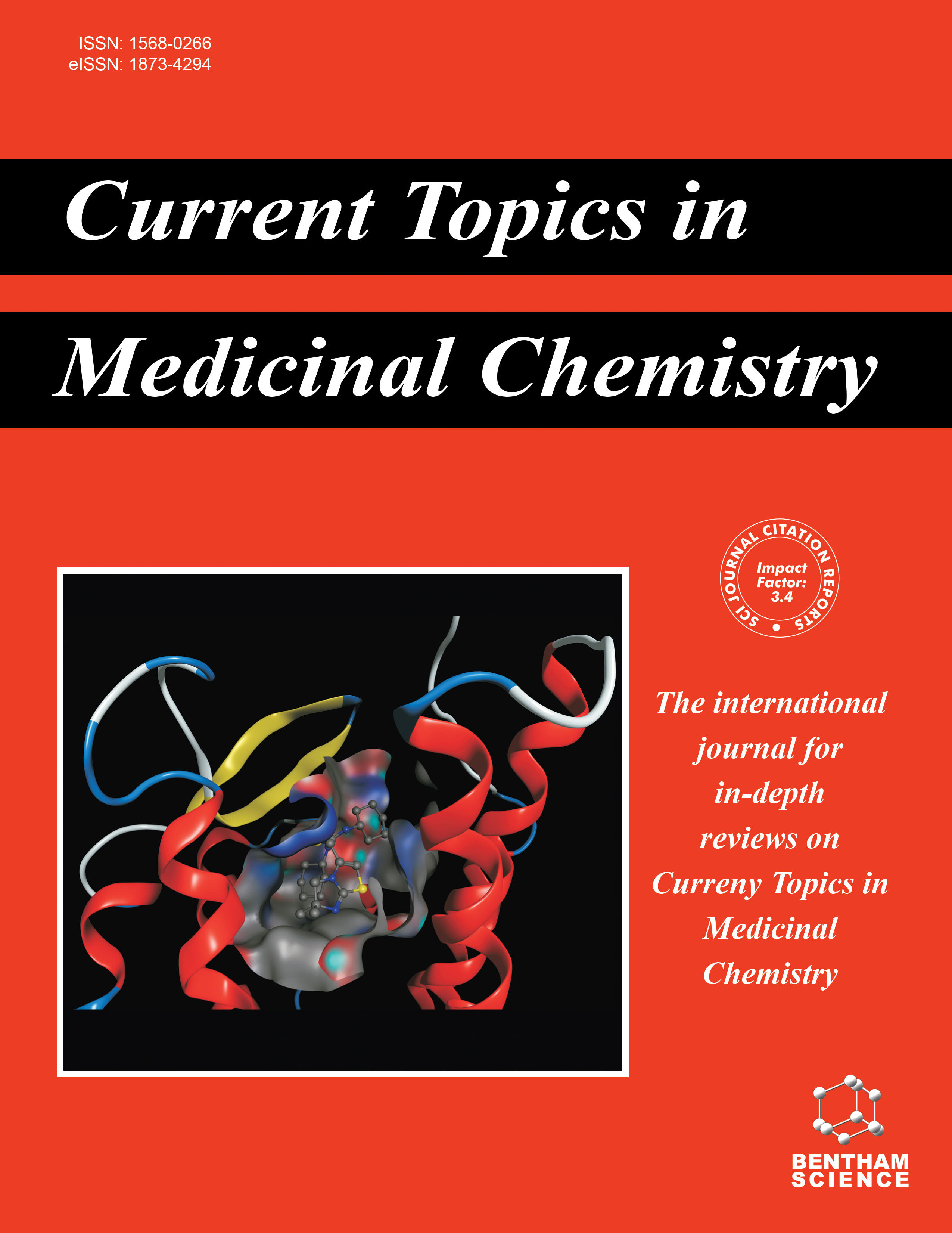- Home
- A-Z Publications
- Current Topics in Medicinal Chemistry
- Previous Issues
- Volume 16, Issue 17, 2016
Current Topics in Medicinal Chemistry - Volume 16, Issue 17, 2016
Volume 16, Issue 17, 2016
-
-
Designing Multi-Targeted Therapeutics for the Treatment of Alzheimer's Disease
More LessAuthors: Ilkay Erdogan Orhan and F. Sezer SenolDue to multi-faceted pathology of AD; no drug can seize the progress of the disease, whereas only the symptomatic treatment is available at the moment. Several drug classes to treat AD are available in clinical use, AChEIs being the most prescribed. In addition to AChEIs, secretase enzymes and iron chelators have turned out to be the focus of research and the popular targets in drug discovery against AD. The latest approac Read More
-
-
-
Omega-3 Fatty Acids in the Management of Epilepsy
More LessAuthors: Silvia Tejada, Miquel Martorell, Xavier Capó, Josep A. Tur, Antoni Pons and Antoni SuredaOmega-3 and omega-6 fatty acids are polyunsaturated fatty acids (PUFAs) with multiple double bonds. Linolenic and alpha-linolenic acids are omega-6 and omega-3 PUFAs, precursors for the synthesis of long-chain PUFAs (LC-PUFAs), such as arachidonic acid (omega-6 PUFA), and eicosapentaenoic and docosahexaenoic acids (omega-3 PUFAs). The three most important omega-3 fatty acids are alpha-linolenic, eicos Read More
-
-
-
Aporphines and Parkinson’s Disease: Medical Tools for the Future
More LessParkinson’s disease is a motor dysfunction that has been widely studied but many of the reports on commercial drugs for the treatment of this disease have afforded some undesirable side effects that generate an extensive and unviable treatment by economic costs and due to the bioavailability of the assayed compounds. At present, some molecules are used as L-DOPA agonists or can change the dopamine conce Read More
-
-
-
Neuroprotective Effects of Fisetin in Alzheimer’s and Parkinson’s Diseases: From Chemistry to Medicine
More LessAccording to the epidemiological reports published by the World Health Organization, the proportion of elderly people (over 60 years) will increase from 11% to 22% by 2050 worldwide. This increase will be associated with a growing rate of morbidity and mortality of age-related diseases. Mental and neurodegenerative diseases are important health problems in elderly people. Therefore, recent research has been focused Read More
-
-
-
Cannabinoids for the Treatment of Schizophrenia: An Overview
More LessAuthors: Anna Capasso, Eduardo Sobarzo-Sánchez, Seyed Fazel Nabavi and Luca RastrelliCannabinoids are found to be very useful in psychiatry because of their antipsychotic properties suggesting a therapeutic use as neuroleptic agents in limiting psychotic diseases. Cannabinoids treatments are both able to reduce the typical symptoms of schizophrenia and to slow down the disease aggravation. In the present review, we reported recent studies supporting the idea that the cannabinoid system may modulate t Read More
-
-
-
A Systematic Review of Plant-Derived Natural Compounds for Anxiety Disorders
More LessAnxiety disorders are the most common mental illnesses affecting human beings. They range from panic to generalized anxiety disorders upsetting the well-being and psychosocial performance of patients. Several conventional anxiolytic drugs are being used which in turn results in several adverse effects. Therefore, studies to find suitable safe medicines from natural sources are being conducted by researchers. The aim of Read More
-
-
-
Neuroprotective Role of Natural Polyphenols
More LessNeurodegenerative diseases cause a progressive functional alteration of neuronal systems, resulting in a state of dementia which is considered one of the most common psychiatric disorders of the elderly. Dementia implies an irreversible impairment of intellect that increases with age causing alteration of memory, language and behavioral problems. The most common form, which occurs in more than half of all cases, is Alzhei Read More
-
-
-
Resveratrol as a Potential Therapeutic Candidate for the Treatment and Management of Alzheimer’s Disease
More LessResveratrol (3,4',5-trihydroxystilbene) is a naturally occurring phytochemical present in red wine, grapes, berries, chocolate and peanuts. Clinically, resveratrol has exhibited significant antioxidant, anti-inflammatory, anti-viral, and anti-cancer properties. Although resveratrol was first isolated in 1940, it was not until the last decade that it was recognised for its potential therapeutic role in reducing the risk of neurodegeneration, a Read More
-
Volumes & issues
-
Volume 25 (2025)
-
Volume 24 (2024)
-
Volume 23 (2023)
-
Volume 22 (2022)
-
Volume 21 (2021)
-
Volume 20 (2020)
-
Volume 19 (2019)
-
Volume 18 (2018)
-
Volume 17 (2017)
-
Volume 16 (2016)
-
Volume 15 (2015)
-
Volume 14 (2014)
-
Volume 13 (2013)
-
Volume 12 (2012)
-
Volume 11 (2011)
-
Volume 10 (2010)
-
Volume 9 (2009)
-
Volume 8 (2008)
-
Volume 7 (2007)
-
Volume 6 (2006)
-
Volume 5 (2005)
-
Volume 4 (2004)
-
Volume 3 (2003)
-
Volume 2 (2002)
-
Volume 1 (2001)
Most Read This Month
Article
content/journals/ctmc
Journal
10
5
false
en


